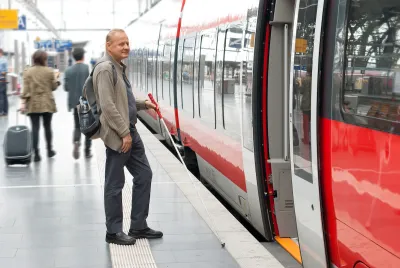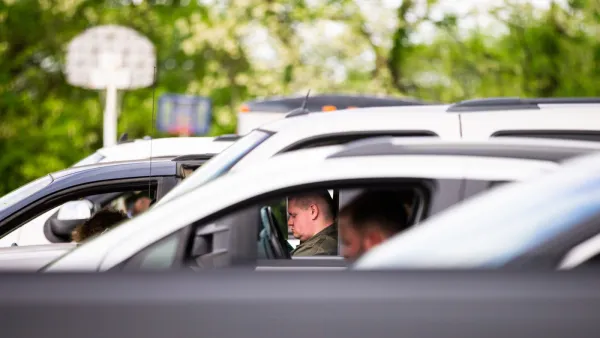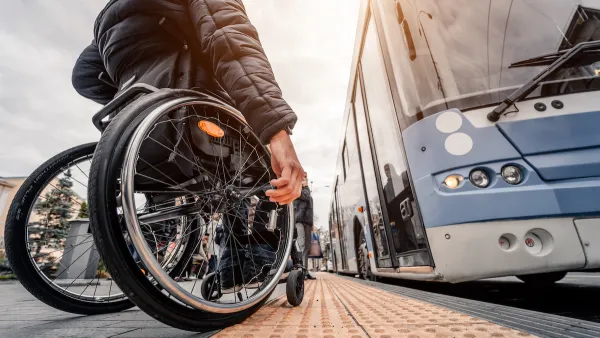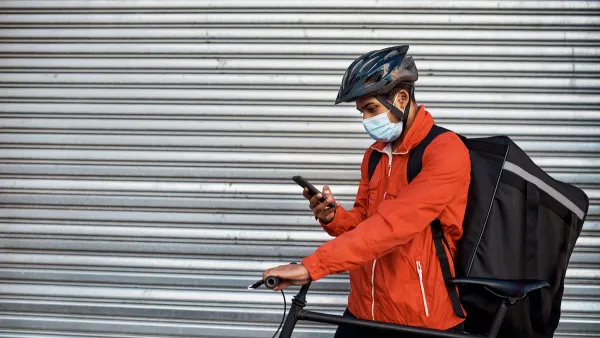People who are physically unable to drive can benefit from effective public transit systems and accessible, mixed-use neighborhoods.

The car-centric infrastructure that dominates most U.S. cities makes navigating the public realm more difficult for many groups, including people with disabilities.
As Matthew Rozsa explains in a piece on Salon, “there is a crucial difference between not driving for economic or ecological reasons — or, in extreme cases, due to legal consequences for crimes like driving while intoxicated — and not driving because your body makes the task physically impossible. In the latter scenario, being unable to drive isn't merely an inconvenience. It becomes another manifestation of a person's disability, and a particularly debilitating one at that.”
Zoe Gross, director of advocacy at the nonprofit Autistic Self Advocacy Network, told Salon in an email that “not being able to drive can significantly worsen a person's life, especially if they live in an area of the country with little or no public transportation.”
People who are unable to drive, regardless of their ability, can face discrimination in employment, education, healthcare, and other important areas. Advocates say supporting people with disabilities involves building robust public transportation systems and putting a stronger focus on accessibility in infrastructure and mobility projects.
FULL STORY: The hidden ways our car-obsessed culture is especially hard on disabled people

National Parks Layoffs Will Cause Communities to Lose Billions
Thousands of essential park workers were laid off this week, just before the busy spring break season.

Retro-silient?: America’s First “Eco-burb,” The Woodlands Turns 50
A master-planned community north of Houston offers lessons on green infrastructure and resilient design, but falls short of its founder’s lofty affordability and walkability goals.

Delivering for America Plan Will Downgrade Mail Service in at Least 49.5 Percent of Zip Codes
Republican and Democrat lawmakers criticize the plan for its disproportionate negative impact on rural communities.

Test News Post 1
This is a summary

Test News Headline 46
Test for the image on the front page.

Balancing Bombs and Butterflies: How the National Guard Protects a Rare Species
The National Guard at Fort Indiantown Gap uses GIS technology and land management strategies to balance military training with conservation efforts, ensuring the survival of the rare eastern regal fritillary butterfly.
Urban Design for Planners 1: Software Tools
This six-course series explores essential urban design concepts using open source software and equips planners with the tools they need to participate fully in the urban design process.
Planning for Universal Design
Learn the tools for implementing Universal Design in planning regulations.
EMC Planning Group, Inc.
Planetizen
Planetizen
Mpact (formerly Rail~Volution)
Great Falls Development Authority, Inc.
HUDs Office of Policy Development and Research
NYU Wagner Graduate School of Public Service





























